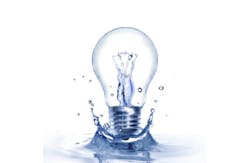BIRMINGHAM — In Water Technology’s November article, “Energy management in water facilities: Part one,” Amin Almasi, a contributing author, writes about how efficient energy management can lead to significant savings for water facilities.
In part one of this special two-part feature, Almasi offers a few crucial elements water facilities should keep in mind regarding energy management. “Water systems that are successfully managing their energy have several elements in common, which could be summarized as critical components in energy management,” explains Almasi.
He continues by offering the following features for successful energy management:
- Commitment from senior engineers and managers is important. A clear strategic leadership on energy management is essential for success.
- The integration of energy management into the water facility’s existing systems and operational procedures.
- Appropriate resourcing of the energy management strategy, energy efficiency assessments and project implementation with skilled and knowledgeable personnel and sufficient funds for implementation.
- Energy efficiency goals that can be translated into water system’s performance objectives, which are time-bound, measurable, linked to action plans and included in management performance metrics.
- Implementation of tracking, measurement and reporting systems to monitor performance in relation to goals and objectives. Effective communication, internally and externally, of the priority placed on energy management and the performance and successes of the water system’s energy management strategy.
You can find part one of this article on energy management here.
About the Author
Sign up for our eNewsletters
Get the latest news and updates
